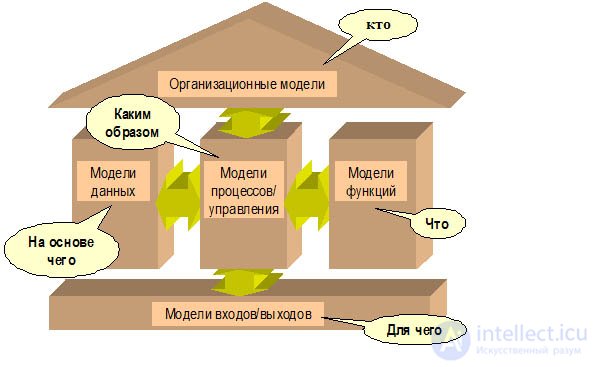Lecture
The ARIS methodology was developed by IDS Scheer AG, Germany. Currently, the ARIS software of the same name is presented on the market of business process modeling tools, which includes several modules.
The development of the ARIS methodology pursued the following objectives:
The existing standards and specifications for the description of processes and data, such as IDEF3, ERD, DFD, UML, etc., were integrated into the ARIS methodology.

An approach to describing processes based on the ARIS methodology assumes consideration of the organization’s activities from four points of view: organizational structure, data (flows and structure), functions (functional hierarchies), control and management (summary business process models describing inputs and outputs).
The ARIS methodology includes a large number of different notations that allow the creation of various flexible models of organization. The most significant and practically used ARIS notations are:
The advantage of the ARIS methodology (from a formal point of view) lies in its complexity, which is manifested in the interrelation of models built in different notations. The ARIS methodology allows us to describe the activities of an organization from different points of view, while the resulting models will be to some extent related.
In this case, the main models used in the ARIS environment are:
Comments
To leave a comment
Analysis and reengineering of business processes
Terms: Analysis and reengineering of business processes